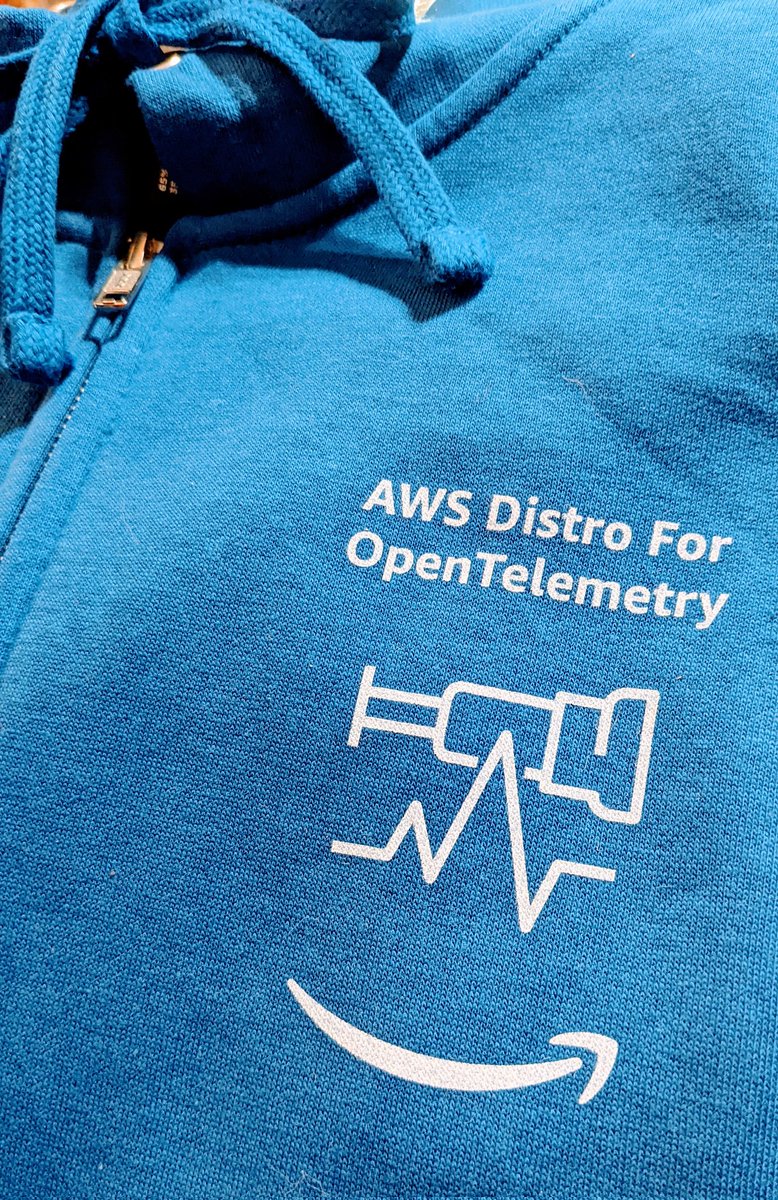Please Please OTel Me Now
by Jay CuthrellShare and discuss on LinkedIn or HN
Duran Duran - Is There Something I Should Know? (1982)
Getting Informed
If you are new to OpenTelemetry — or “Otel” for short — that’s understandable. You might have come across application performance management companies, tools, techniques, or even projects like OpenTracing1 or OpenCensus2 that predate Otel.
Please subscribe to receive new posts 🤓
 In my defense, Duran Duran is less meme-worthy than Nickelback I made a break, I run out yesterday 🎶
In my defense, Duran Duran is less meme-worthy than Nickelback I made a break, I run out yesterday 🎶
During the .com years, it was common to find references to “load testing” or “traffic simulation” software and vendors in response to ever greater expectations for performance of so-called “3 tier” web applications. The common thinking then was that by instrumenting each tier and then simulating the growing consumer web traffic before you launched a website, you might find performance bottlenecks to fix leading to a better end user outcome — especially if there was a commercial component to the website such as e-commerce, etc. that relied upon performance layers for the web servers, app servers, and database servers.
Fast forward a few years and the IT analyst community identified a growing number of vendors supplying software performance agents, software performance collectors, and performance measurement oriented tools as the “application performance management” market. By 2013, application performance management had become a somewhat crowded3 multibillion dollar market that is currently4 on track to become better known as the “observability” market.
By 2015, The OpenTracing Project was launched by Uber application performance management engineers with the ambition of proving a vendor neutral instrumentation library for developers interested in application performance management. Similarly, Google application performance management engineers using similar internal tools became the inspiration for a clean room implementation of those tools called OpenCensus.
Maybe next year maybe no go 🎶
By early 20195, convergence took place as OpenTracing and OpenCensus merged to create OpenTelemetry6. So, if you are starting out with an understanding of Otel you can relegate references to OpenTracing as a historical foundational footnote that has been archived by the Cloud Native Computing Foundation7 as of early 2022.
Who uses Otel?
Well, first, let’s recall recent posts regarding platform engineering and telemetry.
 Fudge SundayBuild a Cloud Platform FoundationRead more2 months ago · Jay Cuthrell
Fudge SundayBuild a Cloud Platform FoundationRead more2 months ago · Jay Cuthrell Fudge SundayPlatform Engineering BluesRead more2 months ago · Jay CuthrellNow that we’re familiar with a few definitions of platform engineering, it’s time for specific examples as it relates to Otel. Luckily, Charity Majors, CTO of Honeycomb.io recently provided succinct examples8 across both Plaform Engineers and Site Reliability Engineers.
Fudge SundayPlatform Engineering BluesRead more2 months ago · Jay CuthrellNow that we’re familiar with a few definitions of platform engineering, it’s time for specific examples as it relates to Otel. Luckily, Charity Majors, CTO of Honeycomb.io recently provided succinct examples8 across both Plaform Engineers and Site Reliability Engineers.
Platform Engineers:
Builds for Internal developer teams
Uses APM, observability, tracing. Cares a lot about instrumentation and OpenTelemetry.
Site Reliability Engineers:
Builds for customers
Uses metrics, logs, dashboards; monitoring, alerting, and agent/sidecar/blackbox telemetry.
What it takes to make it show 🎶
Who else is a great resource of information on Otel?
The following tweets from 2021-2022 are just a sample of the amazing community to consider Following or adding to your Lists.
[ Liz Fong-Jones (方禮真) @lizthegreyIn case you’re curious what getting featured by HN looks like.
Liz Fong-Jones (方禮真) @lizthegreyIn case you’re curious what getting featured by HN looks like.
Same data side by side in @LightstepHQ and in @honeycombio, from the #OpenTelemetry collector receiving browser instrumentation and teeing it to both sinks (thanks @austinlparker!) 

 ](https://twitter.com/lizthegrey/status/1453525797243797510?s=20&t=40rloke9wxFY3fbZZU2ZCQ)[12:55 AM ∙ Oct 28, 2021
](https://twitter.com/lizthegrey/status/1453525797243797510?s=20&t=40rloke9wxFY3fbZZU2ZCQ)[12:55 AM ∙ Oct 28, 2021
15Likes2Retweets](https://twitter.com/lizthegrey/status/1453525797243797510?s=20&t=40rloke9wxFY3fbZZU2ZCQ)[ Charity Majors @mipsytipsyFor those of you who have been living under a rock, OTel is an open standard for generating, collecting, and exporting telemetry in a vendor agnostic way.
Charity Majors @mipsytipsyFor those of you who have been living under a rock, OTel is an open standard for generating, collecting, and exporting telemetry in a vendor agnostic way.
Before OTel, every vendor had its own libraries, and switching (or trying out) new vendors was a *bitch*.](https://twitter.com/mipsytipsy/status/1494857554714718209?s=20&t=40rloke9wxFY3fbZZU2ZCQ)[2:13 AM ∙ Feb 19, 2022
97Likes7Retweets](https://twitter.com/mipsytipsy/status/1494857554714718209?s=20&t=40rloke9wxFY3fbZZU2ZCQ)[ Gordon Radlein @maascampToday was my last day at Meta.
Gordon Radlein @maascampToday was my last day at Meta.
On Monday I’ll start my new role as an Eng Director @datadoghq working on APM and figuring out our plans for @opentelemetry.
Excited to try my hand on the product side of the business.](https://twitter.com/maascamp/status/1507473053814439936?s=20&t=40rloke9wxFY3fbZZU2ZCQ)[9:42 PM ∙ Mar 25, 2022
624Likes16Retweets](https://twitter.com/maascamp/status/1507473053814439936?s=20&t=40rloke9wxFY3fbZZU2ZCQ) Alolita Sharma🌸 @alolitaFinal step of launch! We have swag for AWS Distro for OpenTelemetry! 🚀🎉 #OpenTelemetry #Observability #ADOT
Alolita Sharma🌸 @alolitaFinal step of launch! We have swag for AWS Distro for OpenTelemetry! 🚀🎉 #OpenTelemetry #Observability #ADOT  [1:59 AM ∙ Jan 27, 2022
[1:59 AM ∙ Jan 27, 2022
124Likes6Retweets](https://twitter.com/alolita/status/1486519136528179203?s=20&t=40rloke9wxFY3fbZZU2ZCQ)So, how will Otel factor into the next industrial revolution?
Until next time… Place your bets!
Disclosure
I am linking to my disclosure.
1Read: https://web.archive.org/web/20160115075431/http://opentracing.io/
2Read: https://web.archive.org/web/20180105085814/http://opencensus.io/
3Read: https://www.statista.com/statistics/486354/application-performance-management-software-vendor-market-share/
4Read: https://www.idc.com/getdoc.jsp?containerId=US48353021
5Read: https://www.cncf.io/blog/2019/05/21/a-brief-history-of-opentelemetry-so-far/
6Read: https://opentelemetry.io
7Read: https://www.cncf.io/blog/2022/01/31/cncf-archives-the-opentracing-project/
8Read: https://www.honeycomb.io/blog/future-ops-platform-engineering
Topics:
✍️ 🤓 Edit on Github 🐙 ✍️
Share and discuss on LinkedIn or HN
-
Get Fudge Sunday each week